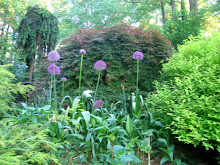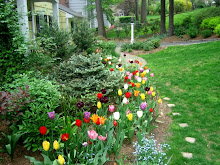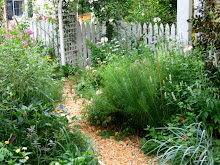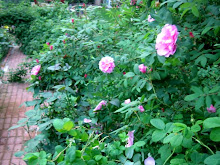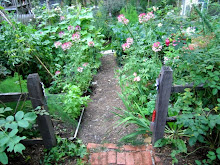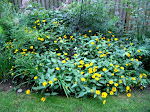First published in 2005 and re-published in 2008, I first heard about Last Child in the Woods by Richard Louv from another book, A Child's Garden by Molly Dannenmaier, which I read and enthusiastically reviewed last year. I'm reading it right now and would highly recommend it to anyone with children. From the introduction:
"Within the space of a few decades, the way children understand and experience nature has changed radically...Today, kids are aware of the global threats to the environment--but their physical contact, their intimacy with nature, is fading...
...This book explores the increasing divide between the young and the natural world, and the environmental, social, psychological, and spiritual implications of that change. It also describes the accumulating research that reveals the necessity of contact with nature for healthy child--and adult--development...
...Our society is teaching young people to avoid direct experience in nature. That lesson is delivered in schools, families, even organizations devoted to the outdoors, and codified into the legal and regulatory structures of many of our communities..."
An absurd example of this was written about in today's New York Times in the article "Build a Wiffle Ball Field and Lawyers Will Come," which reports on the local Greenwich, Connecticut backlash against a group of teenagers who turned an empty, town-owned lot into a miniature Fenway Park. The saddest quote comes from Jeff Currivan, 17: “They think we’re a cult...People think we should be home playing ‘Grand Theft Auto.’ ”

 The purity of the white is stunning: it has no of pink or cream. The flowers are quite large and the individual sepals are very big making the blooms more striking. In addition, Sister Theresa performs beautifully in full shade and part shade which makes her a good choice for interplanting in my hedge.
The purity of the white is stunning: it has no of pink or cream. The flowers are quite large and the individual sepals are very big making the blooms more striking. In addition, Sister Theresa performs beautifully in full shade and part shade which makes her a good choice for interplanting in my hedge. This week I took cuttings from my Sister Theresa of non-blooming wood. I want about seven new plants, so I took two stems. I cut the stems into three or four parts with very sharp pruners.
This week I took cuttings from my Sister Theresa of non-blooming wood. I want about seven new plants, so I took two stems. I cut the stems into three or four parts with very sharp pruners. I trimmed the leaves by cutting half or more of the leaf surface away. The easiest way to do that is to fold the leave at its midrib and cut half off. After which, I cut the stem which will be rooting at an angle and dipped it into rooting hormone.
I trimmed the leaves by cutting half or more of the leaf surface away. The easiest way to do that is to fold the leave at its midrib and cut half off. After which, I cut the stem which will be rooting at an angle and dipped it into rooting hormone.
 The stone frogs are a couple of inches tall and wide--large enough to notice, but not too large to take away from the plants. Also, they are a representation of an animal we like, as I have prohibited statuary of all garden pests--rabbits, squirrels, etc.
The stone frogs are a couple of inches tall and wide--large enough to notice, but not too large to take away from the plants. Also, they are a representation of an animal we like, as I have prohibited statuary of all garden pests--rabbits, squirrels, etc.





























